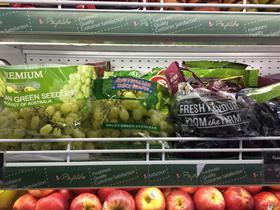
Asian markets continue to drive volume and value growth for Australian table grape exports.
According to figures released by Hort Innovation Australia, the industry shipped 152,200 tonnes of grapes valued at A$623m over the 2020 financial year (12 months to 30 June 2020, FY2020).
“When looking at table grape export figures over the past three years, volume increased by 47 per cent, while value increased by 67 per cent,” said Hort Innovation’s head of international trade, Penny Measham.
China continues to be the leading export destination for Australian table grapes, absorbing 42 per cent of total exports by volume in FY2020.
South Korea is emerging as a key market for the industry, with shipments to the North Asian nation increasing by 152 per cent in volume year-on-year in FY2020, and 951 per cent over the last two years, albeit off a low base.
The Philippines is also turning to Australia for table grapes, with export value increasing 29 per cent year-on-year in FY2020, according to Global Trade Data.
“The table grape success was underpinned by the production of high-quality fruit, being able to export some product prior to significant global disruption and the ability to sea freight product,” said Hort Innovation’s general manager marketing and trade, Justine Coates.
“Many horticulture products are now facing into a peak period of export with reduced airfreight capacity due to Covid-19.”
Hort Innovation is working to build a sustainable position for Australian table grapes in key export markets in Asia through its Taste Australia retail programme, which includes a range of marketing activations.
Measham said the 2020 Taste Australia campaign launched at the peak of the Covid-19 global outbreak, with all participating markets impacted in some way.
“As markets went into lockdown the retail landscape changed dramatically, shoppers were limited in stores and footfall dropped, with many consumers turning online for grocery shopping,” Measham explained.
“Foundation activities such as in-store retail sampling and media launches were either impossible or reduced. The programme pivoted to become more digitally focused, with an upweighting to social media, e-commerce, use of influencers and digital advertising to reach consumers in their homes.”



